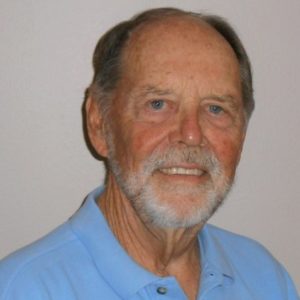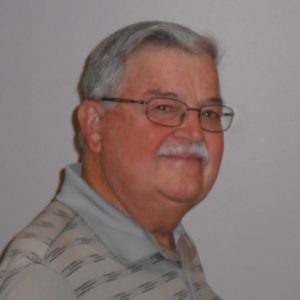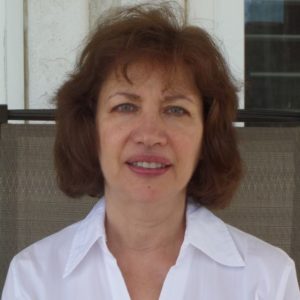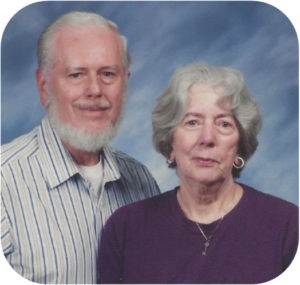September 2020
Honoring Yesterday – Protecting Tomorrow
Vol. 51, No. 9
What’s Inside?
California Supreme Court Protects the California Rule
Breaking “Good” News – Update on RESDC Zoom Presentations
President’s Message
Welcome New Members
Happy Labor Day! – Office Closed
Recent Events
RESDC Event Cancellations
Bits and Pieces
Pension Facts
Board Member Profile Leila Attar
Members Share “Lost at Sea”
September Calendar of Events
7—(Mon.) Labor Day
RESDC and SDCERA offices closed for holiday
10—(Thurs.) RESDC Board of Directors Meeting
Via Zoom Web Conferencing, 9:30 a.m.
17—(Thurs.) SDCERA Board of Retirement Meeting
View the NETWORK
as a printable PDF
Are you on social media?
Stay connected with us!![]()
![]()
![]()
QUOTE
OF THE MONTH
If you see something that is not right, not fair, not just, you have a moral obligation to do something about it.
▪ Congressman John Lewis
CALIFORNIA SUPREME COURT
PROTECTS THE CALIFORNIA RULE BUT NOT PENSION SPIKING
The California Supreme Court finally issued a long-awaited ruling on July 30th, refusing to reexamine the legality of The California Rule, to the relief of anxious public retirees.
The Court ruled, “We have no jurisprudential reason to undertake a fundamental reexamination of the (California) rule.”
The California Rule is a recognized legal doctrine, requiring that terms for public employee pensions in place when they began their government careers cannot be reduced unless the worker is given comparable increases in other benefits. The California Rule is based on the recognized contractual obligations of employment agreements, and contract clauses in the U.S. and state constitutions, and, while technically applicable only in California, often influences courts in other states.
But this California Supreme Court ruling also clarified that provisions of the 2012 California Public Employees Pension Reform Act (PEPRA), which prohibits the use of certain strategies to increase pension benefits, are also applicable, even though the strategies may have been official and utilized at the beginning of public employees’ careers.
The particular strategy prohibited by PEPRA in this case was the application of unused vacation and other extra earnings to inflate pensionable earnings and allow higher pensions. The Court said PEPRA “clarified rules and closed loopholes,” which they found to be a proper objective in keeping with legislators’ lawmaking authority.
The case was originally filed by the Alameda County Deputy Sherriff’s Association in 2012 in response to PEPRA, and later joined by a Merced County union. California Governors Jerry Brown and Gavin Newsom had pressed the Court to broadly address The California Rule, to allow the management of budgets in severe economic circumstances.
This reaffirmation of The California Rule means California public employees are better assured they’ll receive the retirement benefits they were promised and plan on. □
BREAKING “GOOD” NEWS!
Update on RESDC Zoom Presentations and Virtual Health Fair Announcement
We want to thank all members and guests who joined in for our recent “Virtual RESDC” events, which included great presentations from former County Deputy District Attorney, Lead Elder Abuse Prosecutor and RESDC member Paul Greenwood and County Registrar Michael Vu.
These presentations, while not the customary in-person events we have been proud to host over the years, offer an ability to provide excellent content with an array of relevant speakers. And there is more to come…
We are currently in the planning stage for a Virtual Health Fair, scheduled for October 28, 2020. This collaborative, interactive event will be presented via Zoom and will include our partners at SDCERA and Pacific Group Agencies who will provide information on the upcoming Benefit Plan Open Enrollment Period. Stay tuned to the October edition of THE NETWORK for more details!
Launch of the RESDC YouTube Channel!
We officially launched a RESDC YouTube Channel where you can access past RESDC Zoom presentations mentioned above and other videos related to the world of public employees, pensions, and great community programs and services.
The best part is…it takes only two clicks to access on the RESDC website. Just visit www.resdc.net, click the drop down titled “News & Events”, and select RESDC YouTube Channel. It is that easy. We hope you check it out!
Interviews with Board of Supervisors Candidates
More exciting news includes a great newsletter feature to look forward to. As we head into the November election, RESDC will be publishing an article in the October edition of THE NETWORK, highlighting interviews RESDC leadership conducted with County Board Supervisors Candidates in Districts 1, 2, and 3.
Lastly, a quick reminder… If you haven’t provided your email address to us, now is a great time to forward it to resdc@resdc.net. This is another great way to stay up to date on the latest news and information. □
PRESIDENT’S MESSAGE
By Stan Coombs, President
 We’ve been focusing on the coronavirus pandemic lately, but hardly to excess considering the carnage it’s brought us. Writing in early August, the situation is barely improving. The so-called reopening spike in new cases, hospitalizations and fatalities continues, and the economic impact is severe and will be lasting.
We’ve been focusing on the coronavirus pandemic lately, but hardly to excess considering the carnage it’s brought us. Writing in early August, the situation is barely improving. The so-called reopening spike in new cases, hospitalizations and fatalities continues, and the economic impact is severe and will be lasting.
Local governments face increasing public health costs to fight the virus at the same time social distancing reduces consumer spending, employment and wages, and therefore sales, income and property tax revenues.
The U.S. Bureau of Economic Analysis reported our gross domestic product fell an annualized 5% during the first quarter of this calendar year, almost entirely due to coronavirus stoppages during March. That was about half the record 10% recorded for the first quarter of 1958. And now the Bureau reports the GDP fell by an annualized 33% during the second quarter. That’s nearly $2 trillion in lost sales, services, wages, profits, and tax revenues, officially placing us into recession.
So, what about our retirement system sponsor, the County of San Diego? Can the County meet its annual retirement obligations if tax revenues plummet? The County’s required contribution isn’t inconsequential, over $530 million in fiscal year 2019, according to their Comprehensive Annual Financial Report.
County staff had estimated the county would see as much as a $395 million revenue shortfall before the end of fiscal year 2019-20 due to the pandemic, and Chief Administrative Officer Helen Robbins-Meyer was quoted to the effect that upcoming fiscal “challenges could be far worse than 9/11 or the 2008 Great Recession.” She expected revenue streams to “dramatically drop,” and county government would “need to change.”
Another early sign that coronavirus economics would be serious for the County was their delayed scheduling of fiscal year 2020-21 budget hearings until August 2020, two months after that fiscal year began. They needed a better idea of the impact of coronavirus before settling on an annual funding plan. Their virtual hearings were eventually scheduled for August 10th, 12th, 19th and 25th.
So where does our retirement system stand now, more than a month into the 2020-21 fiscal year? We don’t have official year-ending figures for 2019-20 yet, but the County met last year’s retirement contribution requirements, which were upwards of $600 million. And we’ve been assured the County has already paid it’s required retirement contributions for 2020-21 in advance, more than $598 million, certainly of interest to retirement system members.
In the larger scope of things, the county’s recommended $6.4 billion, 2020-21 budget that the Board of Supervisors will comb over in August, is up about $159 million overall, or 2.5%, from fiscal 2019-20, we’re told. The increase is apparently mainly caused by federal CARES Act funding requirements related to the coronavirus pandemic and new Human Relations Commission initiatives.
County budgets must be balanced of course, and on the revenue side an initial $231 million funding gap was reported “due to the economic turndown.” The gap was filled with prior year-ending balances, funding changes and about $176 million from county reserve funds, if reports are accurate. We should all hope events during the rest of this 2020-21 fiscal year allow those balancing tax revenue estimates to prove out.
RESDC members can dig deeper into the County Budget at: www.sandiegocounty.gov/openbudget. It’s not difficult to follow the main themes. County budget staff is to be commended for making a morass of facts and figures almost understandable to us commoners, an accomplishment for which they were presented a Government Finance Officer’s Association Distinguished Budget Presentation Award.
In the broader scope of things, this issue of THE NETWORK announces the beginning of a series of new computer-based, interactive Webinar sessions available free to RESDC members. The first of these, a presentation by retired Deputy District Attorney Paul Greenwood, attracted almost 70 members to tune in on July 28th, and the next will feature County Registrar of Voters Michael Vu in a virtual RESDC Coming Home event, at 10:00 a.m. on August 18.
We also describe the just-announced and long-awaited decision of the California Supreme Court not to eliminate or limit The California Rule, which protects public retiree pensions, and First Vice President Chris Heiserman provides an insightful Pension Facts article on continuing federal procrastination in fixing the fiscal crisis for the Social Security Fund, which provides $1 trillion in benefits to some 65 million Americans each year. Without action it is estimated the Trust Fund will reach depletion in 2035. □
WELCOME NEW MEMBERS!
Carolyn F. Allen, Assessor
Blanca L. Armenta
Carmen F. Benbrook
Scott L. Berry*, Sheriff
Alec Beyer*, County Counsel
Delores Brandon, Agriculture/Weights/Measures
Tonya S. Brown, Child Welfare Services
Rosendo R. Campano, General Services
Deanna J. Cline, Superior Court
Laura B. Colligan, Health & Human Services
Catha R. Cotton Moss, Superior Court
Thay K. Dang, Assessor
Stephenia Dayrit, Sheriff
Lance A. DeClue, Environmental Health
David R. Devore, Sheriff
June C.E. Frost, Library
Araceli F. Furtzaig
Editha M. Gordo
Emily A. Harmon, Public Defender
Mark L. Hays, Sheriff
Kevin M. Heaton
Thomas B. Hebert Jr., Public Works
Keith M. Hicks. Probation
Byron T. Hubbard, General Services
Scott R. Husted
Elenita B. Jingco, Child Support Services
Roger D. Jones, Purchasing & Contracting
Lisa Keller-Chiodo, Land Use & Environment Group
Kris Kellett, Health & Human Services
Clayton Kendricks Jr.
Alan C. Kessler
Dolores Klemaske-Hage, County Counsel
Robert W. Knox District, Attorney
Charles S. Larrabee, Sheriff
Lorna A. Larrabee, Health & Human Services
Mary E. Lewis, Health & Human Services
Reginald G. Logan, Public Works
James Marin, Sheriff
Mark McCloskey, Probation
Daniel J. Meyers, Sheriff
Tim D. Mitchell, Probation
Margaret A. Nelson, Planning & Land Use
Xuyen K. Ngo, Health & Human Services
Kim-Hoa T. Nguyen, Health & Human Services
Deborah S. O’Keefe, Child Welfare Services
Doris Lanelle Padilla, Assessor
Reyna Pardenilla
Theresa Peleska, Child Welfare Services
Anita E. Phillips
Harold R. Randolph Sr., Health & Human Services
Karran M. Redford, Sheriff
Tara C. Reyes, Health & Human Services
Richard A. Rivera, Library
Esther C. Sanchez, Public Defender
Christine Sawin-Smith, Probation
Helen C. Sobejana, Sheriff
Rebecca L. Strahm, Sheriff
Ernest A. Susi, Probation
Nina M. Taravella, Probation
Celia Trejo-Garcia
David H. Vaughan, General Services
Tracy A. Watkins, General Services
Orleta A. Wehlage
David R. Wolford, SDCERA
*Associate Member
The surviving spouse of a member is eligible for RESDC membership. For enrollment assistance, call (866) 688-9229. □
HAPPY LABOR DAY!
The RESDC and SDCERA offices are both temporarily closed due to coronavirus guidelines. We are working from home and replying to emails and voice mails. Check for updates on these websites: (www.resdc.net & www.sdcera.org). Both offices will be closed on Monday, September 7th, in observance of Labor Day. Emails and voice mails will be answered on Tuesday, September 8th. □
RECENT EVENTS
California Supreme Court Finds Modifications to County Employment Retirement Law Constitutional, But Leaves “California Rule” Intact. In a much-anticipated ruling last week, the California Supreme Court upheld a 2012 state pension reform provision that prevents pension “spiking” while simultaneously choosing to leave in place, the “California Rule,” a legal doctrine that sets a high bar for rolling back the pension benefit provisions of existing workers.
The California Rule is a California Supreme Court precedent that has stood since a court ruling in 1955. This ruling treats governmental pension benefits for existing employees as contractually “vested” and constitutionally protected. Essentially, the concept is that pension benefits that are promised to an employee upon hire cannot be diminished.
How the COVID-19 Pandemic Has Impacted Retirement Security: A new research brief from the Center for Retirement Research at Boston College shows how the coronavirus-induced economic crisis has inflicted widespread damage on workers’ ability to prepare for retirement.
According to the study, the amount of working-age households that will not be able to afford their present-day standard of living in retirement has increased from 50% to 55% due to the economic downturn. The researchers also discovered that 30% of all workers in the United States could be impacted by layoffs because of the recession.
This high number of layoffs has the potential to create a vicious cycle for workers’ retirement security. As layoffs lead to a loss of earning power, workers then will have far fewer financial resources to prepare for retirement, leading to a decline in available savings to retire securely. Older workers are particularly vulnerable to this effect, for if they lose their jobs now, they may earn less money at the height of their careers before they retire as they have less time to recover the lost income.
To access the research brief, visit: https://crr.bc.edu/ and click on the “briefs” tab. □
RESDC EVENT CANCELLATIONS
Considering ongoing concerns related to the COVID-19 pandemic, the following RESDC events have been cancelled.
The 2020 Health Fair Picnic
The 2020 Holiday Luncheon
The County of San Diego Public Health Officer has announced restrictions prohibiting mass gatherings until further notice. We feel these cancellations are in the best interest of the health and well-being of our members.
As we look forward to turning the calendar to 2021, we are hopeful for the opportunity to host the great “in-person” events our members have enjoyed for many years. Here’s wishing you and all your loved ones, good health and safety in these trying times. □
BITS AND PIECES
Elisa Sanchez worked for the County in the Department of Transborder Affairs from 1985 to 1993. The department was created in 1985 and dismantled in 1993. They staffed the International Trade Commission. Elisa lives in Las Cruces, New Mexico now and was recently married.
Jean Jacobsen will celebrate her 98th birthday next month! Jean worked for the county for about 15 years in several departments including personnel.
Kathy Peterson retired in 1989 from General Services after 22 years of service. She celebrated her 85th birthday in April. Kathy’s family took her on an RV trip from her home in Santa Cruz, to visit her childhood home in North Hollywood. They also drove down to San Diego for some long-awaited visits with old friends and coworkers. She says it was difficult to visit while still social distancing and she is looking forward to another trip to San Diego in the future when she can give hugs to all her friends! □
PENSION FACTS – Pandemic and a Sacred Cow
By Chris Heiserman, Director
 [Breaking News – as we approached the publication deadline for THE NETWORK, President Donald Trump signed Executive Orders that included deferring payroll taxes from August 1 through the end of 2020. The legality of this action may be questioned, and implications of this deferral for the Social Security Trust Fund are unclear]
[Breaking News – as we approached the publication deadline for THE NETWORK, President Donald Trump signed Executive Orders that included deferring payroll taxes from August 1 through the end of 2020. The legality of this action may be questioned, and implications of this deferral for the Social Security Trust Fund are unclear]
Social Security is as close to a Sacred Cow politically as we can get. Elected leaders who would like to reign in the huge expense of this entitlement program are afraid to speak up. They fear the guaranteed backlash from millions of voters who rely on the benefits. Politicians who want to fix the long-term financial dilemma of the Social Security Trust Fund (estimated to reach depletion in 2035) campaign for re-election promising not to touch Social Security, and that’s exactly what they do – nothing.
The problem has been evident for decades and the federal government continues to do what it does best – procrastinate. Some 65 million Americans or 20% of the population receive over $1 Trillion in benefits every year. This includes 90% of those over 65. In 1950 there were 16.5 covered workers per beneficiary – by 2017 there were just 2.8. With no change in sight, taxes flowing into the Trust Fund (6.2% in payroll tax from each worker, matched with 6.2% from the employer) will turn negative soon and benefit payments will drain the fund by 2035. At that point payroll taxes still collected will apparently cover approximately 79% of pledged benefits.
Detractors of Social Security call it a “family welfare scheme” and bemoan the fact that the program pays benefits to many who are not paying payroll taxes, including non-working spouses, widows and children. They suggest that increased fiscal challenges from the corona virus pandemic will make matters worse. They say benefit costs will increase as more workers retire early or claim disabilities, while payroll taxes will drop with the loss of jobs as millions are unemployed.
Social Security reaches almost every American family. It helps older Americans, workers who become disabled, and families where a spouse or parent dies. As of June 2019, about 177 million people worked and paid Social Security taxes and about 64 million people received monthly Social Security benefits. Even though Social Security benefits represent a substantial portion of the retirement income for many older Americans, the program was never meant to be the only source of income for people when they retire.
Social Security replaces a portion of a worker’s pre-retirement income based on lifetime earnings. The average wages that Social Security retirement benefits replaces is calculated on a progressive scale that favors lower income households. If benefits are started at “full retirement age” (66 for early Boomers), this percentage could be as much as 75% for very low earners, 40% for medium earners, and about 27% for high earners.
We have often cited the advice of financial advisers who suggest households should have about 70% of pre-retirement income to live comfortably in retirement. This would include Social Security benefits, plus any defined benefit (DB) pension distributions, defined contribution (DC) 401(k) savings account draw downs, or other personal savings.
Where do these Social Security tax dollars go? In 2020, 85 cents of every Social Security tax dollar received goes to a trust fund that pays monthly benefits to current retirees and their families and to surviving spouses and children of workers who have died. About 15 cents goes to a trust fund that pays benefits to people with disabilities and their families.
“The Great Equalizer”
The Center for Retirement Research at Boston College has a unique perspective on the impact of Social Security on the retirement incomes of American families. Their analysis of overall retirement wealth based on ethnicity found that non-Social Security wealth (DB pensions DC savings accounts, home ownership, etc.) held by white households averaged seven times that of blacks and about five times that of Hispanics. However, because of the progressive nature of Social Security benefit calculations (higher benefits to lower income households), including Social Security in the retirement wealth picture drops white households to about 2.5 times that of minorities. To be sure still not a cause for celebration in addressing the critical issue of income inequality in America, but it does support the point made by the Center that Social Security tips the balance favorably.
Another issue the Center examines is the replacement rate, how close households receiving Social Security come to matching their pre-retirement income. As it turns out compared to white households, replacement rates for black and Hispanic families were much closer than the overall retirement wealth comparison. The assumptions and analysis are complicated, but for example in 2016 the Center suggests the typical “Late Boomer” white family saw a replacement rate of about 51% based on all sources of retirement wealth. The typical black and Hispanic households were at 42% and 48%, respectively. The obvious reason – inequality of income itself. They have a lower earnings target than the whites and their boost from Social Security benefits gets them closer to pre-retirement income.
Pandemic Impact
In an April, 2020 Brief “Social Security’s Financial Outlook: the 2020 Update in Perspective” the Center for Retirement Research specifically addressed the effects of COVID-19 and the nation’s economic shut down on Social Security benefits, cost-of-living adjustments (COLAs), and the program’s financial health. They point out that if the pandemic causes a decline in average earnings in 2020, workers born in 1960 (who turn 60 in 2020) could see a permanent reduction in their benefits. A year of negative wage growth could significantly impact the Social Security benefits of workers nearing retirement, they said.
With respect to COLAs, any adjustment would be determined by comparing 2020 to 2019. It is likely there would be no COLA; however, the brief points out the lack of a COLA might not harm beneficiaries since in theory the cost of goods they purchase would not have increased in price either.
The most likely scenario for the effect of the pandemic on Social Security finances is the depletion date for the Trust Fund could move a couple of years closer. This could be the result if the Covid-19 economic slide causes payroll taxes to drop by say 20% for two years. While this seems like just more bad news, the brief acknowledges that it doesn’t change the basic message regarding fixing the Trust Fund problem so Americans retiring in the mid-2030s and later don‘t see a 20-25% reduction in benefits.
The Center is pragmatic in the face of the long-standing lack of attention to this critical issue for so many families. They say the long-term financing shortfall for Social Security translates to 1% of Growth Domestic Product (GDP), but the changes needed to fix the Social Security funding problem are not impossible, in their view, in light of major fluctuations in spending on other federal programs in the past. In other words, there is wiggle room in the massive federal Budget if Congress affords Social Security the priority it deserves. The Center brief concludes that the pandemic has emphasized the importance of Social Security as a safety net and reliable source of income for retirees and those with disabilities. They suggest that stabilizing Social Security’s finances should be a high priority once the pandemic crisis subsides. Of course, they have beaten this drum before and issued the stark reminder that there is no “silver bullet.” The long-run deficit can be eliminated only by adding money to the system or by cutting benefits. □
BOARD MEMBER PROFILE LEILA ATTAR
 A member of the RESDC Board of Directors since February 2018, Leila retired in September 2016, after 32 years of service with the County. Born and raised in New York, Leila moved to California in 1979, where she received her Master of Public Health from San Diego State University.
A member of the RESDC Board of Directors since February 2018, Leila retired in September 2016, after 32 years of service with the County. Born and raised in New York, Leila moved to California in 1979, where she received her Master of Public Health from San Diego State University.
Leila’s career at the County of San Diego began in 1984, at what was then the Health Services Department, now the Health and Human Services Agency. From 1989 to 2000, she was an Analyst with the Alcohol and Drug Services division, where she worked with the community based organizations that provide the wide array of prevention, treatment and recovery services to the residents of San Diego County. She then worked as an Analyst at the County’s Probation Department starting in the year 2000, providing administrative support to the special programs for youth, adults, and families involved or at risk of being involved in the justice system.
A member of the CRASH, Inc. Board of Directors since 2001, Leila’s familiarity with the operations and requirements of the County has assisted CRASH in understanding its expectations. When a potential residential facility became available, she worked on evaluating its appropriateness and feasibility for an agency program. CRASH, Inc. is a non-profit agency providing substance abuse services in San Diego.
Leila lives in San Diego with her husband, Jim. She enjoys traveling, keeping up with current events, getting together with friends, and supporting environmental and animal causes. Her goal is to work on keeping this planet livable for the generations to come. □
MEMBER’S SHARE
Eugene Miller Nearly Lost At Sea Off The California Coast
 In 1992 RESDC members Eugene and Beverly Miller set off in their 22-foot cruise boat out of Newport Harbor on a seemingly simple excursion to Catalina Island. It was almost a disaster. Gene documented the harrowing nearly eight-hour trip (should have been two) in the August 1992 issue of Sea Magazine.
In 1992 RESDC members Eugene and Beverly Miller set off in their 22-foot cruise boat out of Newport Harbor on a seemingly simple excursion to Catalina Island. It was almost a disaster. Gene documented the harrowing nearly eight-hour trip (should have been two) in the August 1992 issue of Sea Magazine.
They trailered their boat from their Bonita home to Newport Beach and launched by 9 a.m. Gene said he had “aced” the Coast Guard navigation course only a month earlier and had practiced taking readings in San Diego Bay. However, as they cruised past Balboa Island and headed out to sea, the heading he had calculated seemed wrong and he decided to use his best judgment and steer due west since that was Catalina’s location on the chart.
Three hours later as gentle rolling swells turned into steeper, choppier waves, Gene felt they should have arrived at Catalina already. He decided they were “a bit off course” but tried not to worry his wife. He knew in another hour they would have used half a tank of gas. Turns out they couldn’t even radio for help because Gene had been shopping a week earlier for a marine VHF radio but had not purchased it. In the magazine article he wrote: “I cursed myself.”
But suddenly out of nowhere a small fishing boat appeared in front of them. Gene hit his horn, pulled alongside and asked, “Which way to Catalina?” The man at the helm gave him a compass heading but Gene thought his compass was broken, so he pointed about a right angle from the course they had been on. They set off in heavy winds with waves breaking over the bow. Again, from the article: “An hour later, Bev and I were scanning the horizon for a sign of land. When we’d met the fisherman, we’d been on a course that had us between Catalina Island to the north and San Clemente Island to the south. We would have ended up west of both, out of gas, foundering helplessly in the open ocean.”
After more time passed with them straining to pick out land on the cloudy horizon, they were sure they saw Catalina. “We’re saved,” Gene yelled, hugged Beverly tightly and got down on his knees and kissed the deck.
Safely in Avalon Harbor, Gene recalled that fishing boat was the only other vessel they had seen on the trip. He later discovered his compass wasn’t broken after all and he had indeed plotted the correct course. He said, “But because I didn’t have faith in my compass, I believe we came close to disaster.”
[Gene and Beverly Miller were both Eligibility Workers for the County in Chula Vista. He retired in 1982. He was also a retired Air Force Cryptographer who spent nine months in Vietnam, where he said he “should have died 10 times, but God saved me.” Beverly passed away in 2018 and is buried at Miramar National Cemetery. Gene said he would follow her there. Gene’s name is on the Veterans’ Wall of Honor in Alpine with approximately 800 others. He turned 90 on August 13th.] □
THE NETWORK is the official monthly newsletter of the Retired Employees of San Diego County, Inc. (RESDC), a private non-profit organization.
The information printed in THE NETWORK is believed to be from reliable sources. However, no responsibility is assumed by THE NETWORK for inaccuracies contained herein.
Business and Inquiries: Business matters and address changes may be recorded on our voicemail at any time, call (866) 688-9229. Please spell your name so the correct member record can be located.
Retired Employees of San Diego County, Inc.
8825 Aero Drive, Suite 205 | San Diego, CA 92123
Office Hours: 9 a.m. to 2 p.m. Monday through Friday
TELEPHONE: (866) 688-9229 Toll Free
FAX: (619) 688-0766
E-MAIL: resdc@resdc.net

